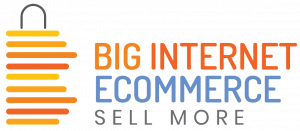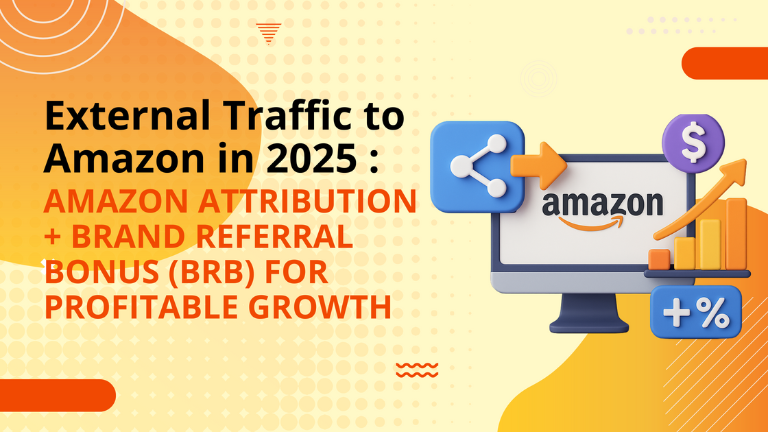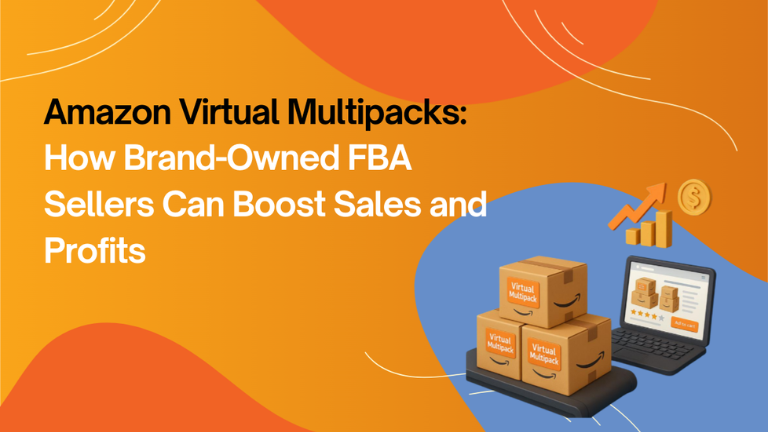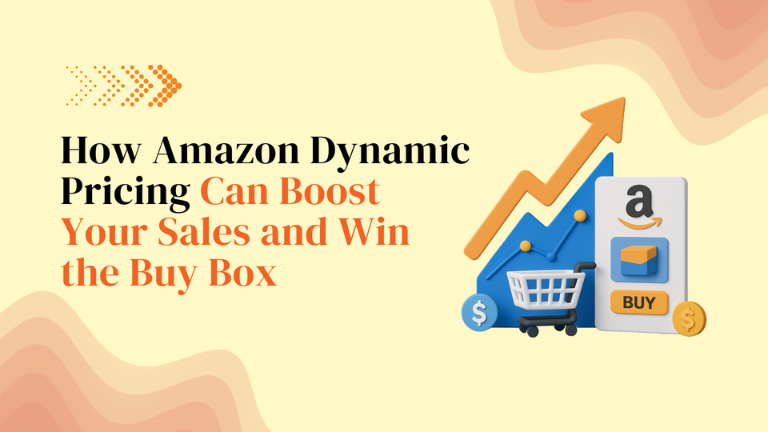External Traffic to Amazon in 2025: Amazon Attribution + Brand Referral Bonus (BRB) for Profitable Growth
If you’re an Amazon brand wondering whether off-Amazon ads are still worth it in 2025, the answer is yes—provided you tag every click with Amazon Attribution and enroll in Brand Referral Bonus (BRB). Done right, external traffic now pays you back, boosts organic rank via sales velocity, and drops TACoS. Why external traffic matters post-2024 Margin payback via Brand Referral Bonus (BRB) When you send tagged traffic that converts, Amazon credits your brand with a bonus averaging ~10% of qualifying sales. That recovers part of referral fees and effectively lowers your blended TACoS. Rank velocity & organic sales External clicks that convert add sales velocity, which most practitioners use to influence organic rank for targeted keywords—creating a compounding effect: more rank → more organic sales → lower ad dependence. (Industry analyses describe this “velocity halo.”) Total-demand expansion through DTC + Buy with Prime Adding Buy with Prime to your site can lift on-site conversion ~25% on average, which increases your overall demand pool. When your broader marketing (email, paid social, creators) is Attribution-tagged to Amazon where appropriate, you can allocate budget to whichever destination (Amazon vs DTC) is converting best—without losing visibility. How to set up Amazon Attribution & Brand Referral Bonus (BRB)—and structure profitable campaigns Step 1 — Set up the measurement spine Enroll in Brand Referral Bonus (Seller Central) and activate Amazon Attribution for all off-Amazon links, including social bios, ad UTMs, creator links, and email CTAs. Build a simple channel taxonomy, then generate Attribution tags per campaign/ad set/creative variant so you can compare like-for-like outcomes: PDP views, add-to-carts, purchases. Step 2 — Align product pages to convert external traffic External visitors bounce if the PDP doesn’t match intent. Tighten above-the-fold assets and detail modules to capture cold traffic. Start with A+ Content and comparison tables to reduce decision friction. Optimize your PDP for inbound external traffic with our guide to A+ content optimization. Step 3 — Channel-by-channel campaign skeletons (profit-first) Google Shopping & Search: Use product-led creatives to match intent; route high-intent terms to Amazon with Attribution tags (capture Brand Referral Bonus (BRB) credits), and route category discovery to a DTC collection with Buy with Prime if you’re margin-constrained. Meta & TikTok: Creative stacks: 15–30s UGC + benefit hooks + social proof. Test “Amazon-native” frames (Prime badge, delivery promise) only within policy. Always link with Attribution tags. Retarget with catalog where possible. YouTube & CTV: Attention is cheaper on mid-funnel video. Use skippable In-Stream and CTV placements to tell benefit stories; push to Amazon with Attribution. (Pair with Sponsored Video/TV on Amazon for surround-sound.) Creators/Affiliates & Email: Provide each partner and newsletter send a unique Attribution link and a short vanity URL. Measure NTB% and CLV over cohorts, not just last-click revenue. Step 4 — Replace Posts with measurable formats Since Amazon Posts was shut down (July 2025), shift those assets to Sponsored Video/Brand and to social where Attribution tagging is available. Keep the measurable loop tight. The profit model (credits + rank lift) and a KPI template you can copy How the money works: External campaign drives ₹10,00,000 in qualified Amazon sales this month. Brand Referral Bonus (BRB) average credit ~10% → ₹1,00,000 in credits back to your account (credited against referral fees), plus the organic sales lift from improved rank velocity. 30-Day Action Plan Week 1: Enroll in Brand Referral Bonus (BRB), set up Attribution, map a channel taxonomy, and tag every external link. Audit your top 5 PDPs and ship A+ upgrades. Week 2: Launch two channels (e.g., Google Shopping + Meta) with 2–3 creative angles each. Stand up a lightweight influencer pilot (5 micro-creators) with unique Attribution tags. Week 3: Read early signals: PDP views → ATC → purchase rate, NTB%, and Brand Referral Bonus (BRB) accruals. Shift budget toward the best path (Amazon vs DTC with Buy with Prime) based on conversion. Week 4: Scale winners 20–30%. Refresh creatives. Expand exact-match search intents to Amazon; keep discovery on DTC with Buy with Prime to protect margin. Track TACoS impact. KPI Template (monitor weekly) TACoS (blended): Should trend down as Brand Referral Bonus (BRB) credits + organic rank kick in. Brand Referral Bonus (BRB) credits received (₹): As % of qualified sales (target ~8–12% depending on category). NTB % (new-to-brand): Especially for upper-funnel channels (email creators, video). (Use Amazon’s definitions and reports where available.) PDP conversion rate from external clicks: Attribution → product page views vs purchases. Organic rank movement: Track target keyword positions pre/post campaigns (correlate with external sales velocity). DTC conversion (Buy with Prime): Aim near the ~25% average lift benchmark and evaluate halo to Amazon. Methodology & Measurement Notes (EEAT) We cite Amazon Seller Central for Brand Referral Bonus (BRB) policy and averages, and Amazon Ads for Amazon Attribution documentation and attribution concepts. We also reference Amazon’s published Buy with Prime conversion benchmarks. Where third-party blogs offer synthesis, they’re cross-checked against Amazon’s primary sources. For performance analysis, rely on Amazon Attribution event paths (PDP view → ATC → purchase), new-to-brand definitions in Amazon Ads reporting, and cohort tracking for CLV where feasible. How Big Internet E-Commerce Can Help At BigInternetCommerce.com, we help Amazon sellers make external traffic actually profitable, not just another cost line: Attribution Setup & Governance – we build out your complete Attribution + Brand Referral Bonus (BRB) tagging structure, so every click is tracked correctly and credits flow back. PDP Optimization for Cold Traffic – our Amazon PPC management and content teams align product pages with off-Amazon creative, ensuring clicks from Meta, Google, or TikTok convert once they land. Cross-Channel Campaign Design – we structure Google, Meta, TikTok, and YouTube campaigns with profit-first logic, balancing TACoS, Brand Referral Bonus (BRB) credits, and organic rank. KPI Dashboards & SIS Reports – we set up reporting frameworks that measure NTB%, lifetime value, and TACoS impact, so you can make budget decisions with confidence. We don’t just send traffic—we help you make it pay back, lower TACoS, and grow profitably on Amazon. Want a plan that reduces TACoS, returns











